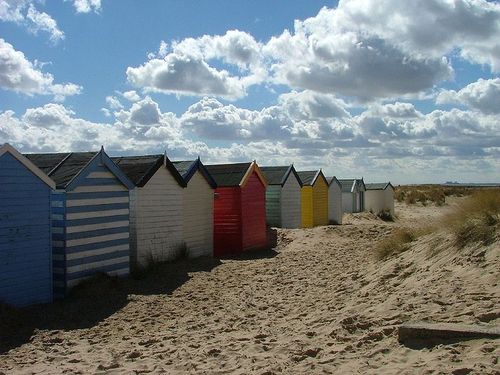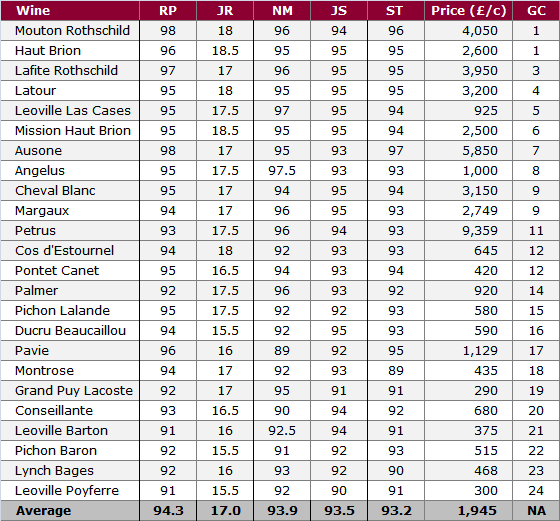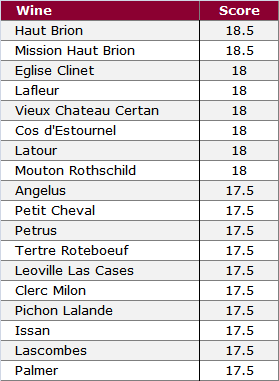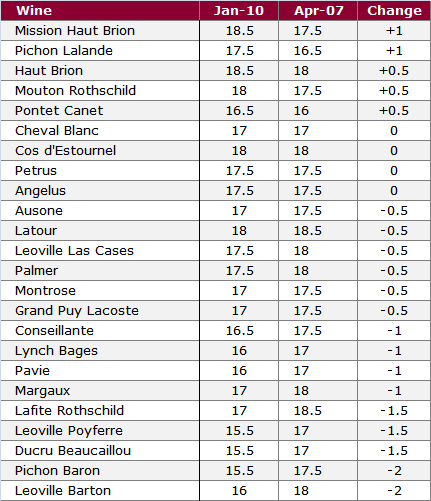
Each January, some of the UK's top tasters gather at the Suffolk seaside town of Southwold (pictured above) to undertake a comprehensive blind tasting of four-year-old Bordeaux.
This put the 2006s under the spotlight, giving us an excellent chance to see how the vintage (which continues to split critical opinion) is performing after two years in bottle.
The first taster out of the blocks with comprehensive notes was the ever dutiful Jancis Robinson MW. Her previous report on the vintage (after London's UGC tasting) was less than enthusiastic – "it is very difficult to see why one should pay so much more for this vintage than for the 2004s and especially the 2001" – and it would seem that the Southwold tasting did little to change her mind.
As she states: "There is still a marked gap between the most and least successful wines. The general problem with all but the best reds is a mean, green streak on the finish. Although many winemakers seem to have made great efforts to compensate for this in the cellar, these are far from fleshy wines and any underripeness can be all too obvious." (Read her full overview, including a list of recommended wines).
Below are all the wines that scored 17.5 and above, with no wine managing to score above 18.5.
Perhaps more pertinent is a comparison of Robinson's Southwold scores with those she awarded during en primeur. If we take the 24 chateaux in the Liv-ex Fine Wine Investables Index as our set, we find that only five wines saw their score move up, with fourteen moving down. Most notable among the fallers was Lafite Rothschild, which was described as "pretty light" and "not immediately of First Growth quality". Her opinion on the vintage has clearly deteriorated since en primeur.
So, is the 2006 vintage an obvious pass? Not quite. It is worth remembering that Bordeaux from less than stellar years can taste particularly poor at four (with the first flushes of fruit having burnt off and the all-important secondary aromas and flavours yet to emerge). It is also fair to say that Robinson is less enthusiastic about the vintage than perhaps any other major critic.
Below we have grouped the scores of the main critics onto one table, and also given the wines a "Grand Classification" according to how they were received across all four tasters. Haut Brion and Mouton share the lead, with the former looking well-priced for the quality.

(RP: Robert Parker, scores from Feb 2009 / JR: Jancis Robinson MW, scores from January 2010 / NM: Neal Martin, scores from Feb 2008/ ST: Steven Tanzer, scores from June 2009 / Price: Liv-ex Best List Price on 28 January 2010 / GC: aggregate position across all four critics.)
From the above we see can see that Parker and Tanzer are the cheerleaders, Robinson and Suckling the naysayers and Martin the agnostic. (Tanzer usually scores significantly lower than others who use the 100-point scale and an average of 93.2 is high). Furthermore, although Jancis views the 2006 in the same quality group as 2001 and 2004, Parker clearly doesn't. If we look at his average vintage score for the above wines, then 2006, with 94.3, is rated significantly higher than 2004 (92.1) and 2001 (92.3).
If there is any lesson to be learnt here, it is surely that the 2006 vintage is one that divides even the best palates and it is probably best tasted before purchase.
From an investment perspective the jury is still out. The 2006s still suffer from their high price at en primeur and despite recent price rises for the top wines from 2001 and 2004, it remains the most expensive of the post-millennium years bar the big guns of 2000, 2003, 2005 (and in some cases 2008). Much will surely depend on the eventual release price of the forthcoming 2009s.





